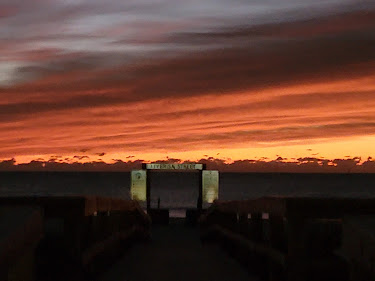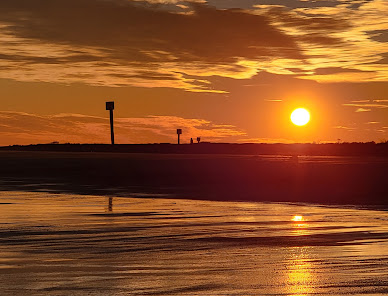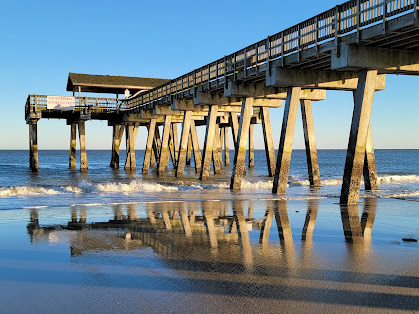Day 9
Saturday, December 24, 2022
Another cold morning on the beach. But, the biting wind had turned into a much more manageable breeze. At seventeen degrees, it's still cold though. But, I went out. When your day starts like this, it's going to be a good one.
It always amazes me how many people seem to show up just before the sun peeks over the horizon. On a morning like this, they miss the whole show.
With another cold, blustery day ahead, I drove back into Savannah and spent some time in the Atlanta History Museum.
While most of us learned about Gen. Sherman's March to the Sea and the subsequent surrender of Savannah during the Civil War, I hadn't seen much about Savannah during the Revolutionary War. The British invasion plan involved a two pronged attack on the city. Lt. Col. Archibald Campbell sailed down from New York with a force of 3,100 soldiers. At the same time, Brig. Gen. Augustine Prevost was marching his own force north from St. Augustine.
Campbell's force arrived first, on December 23, 1778. After assessing the colonial's weak position and significantly smaller force, he chose to attack and not wait for Prevost's men. Maj. Gen. Robert Howe had his men set up a defensive line in front of the advancing British force. His line was anchored by thick swamps on both sides. The British were able to find a way through the swamp and caught the colonial force from behind. Savannah fell.
Colonial General Benjamin Lincoln was charged with retaking the city. He knew he couldn't do it alone. Help came in the form of Admiral Charles Henri' Hector d'Estrang, as well as the French Navy.
The French plan was to sail up the Savannah River and bombard the city. The British countered by scuttling one of their older ships in the channel, blocking the French. This forced the French to unload their cannon and bombard the city from the ground.
On the morning of October 8, 1779, the decision was made for a direct assault on the British positions. The British had build strong defensive positions and easily repulsed numerous attacks. On October 17th, the decision was made to retreat and abandon the effort.
Just across the street from the musuem is where the British defenses were built, and they've recreated one of their defensive redoubts.
Jus a couple of blocks away you'll fine remants of the Savannah-Ogeechee Canal. It was completed in 1830 and ran just over sixteen miles in length. Only a few section are left.
The Central of Georgia Railway built a brick arch bridge over the canal in 1853. While no longer in use and fenced off, the bridge is still intact.
The afternoon was starting to wane and it was time to head back to Tybee Island for sunset.
With all the shallow standing water on the beach, I could sense something big. The only decision was where to stand and wait.
Even with the sun dipping below the horizon, you could tell the show wasn't over quite yet. It was all about being a little patient.
Even as the red light began to fade and the sky darken, the show still wasn't quite over.
Day 10
Sunday, December 25, 2022
Sunrise wasn't nearly the lightshow as the previous morning, but still worth it.
I always miss this place when I take the inevitable drive home.
David
12/2022
PS: Next up for me, a dash up to New York City next month. I've cancelled the last couple of years due to Covid concerns. But, I really miss the trips. After January. I really don't know.































































